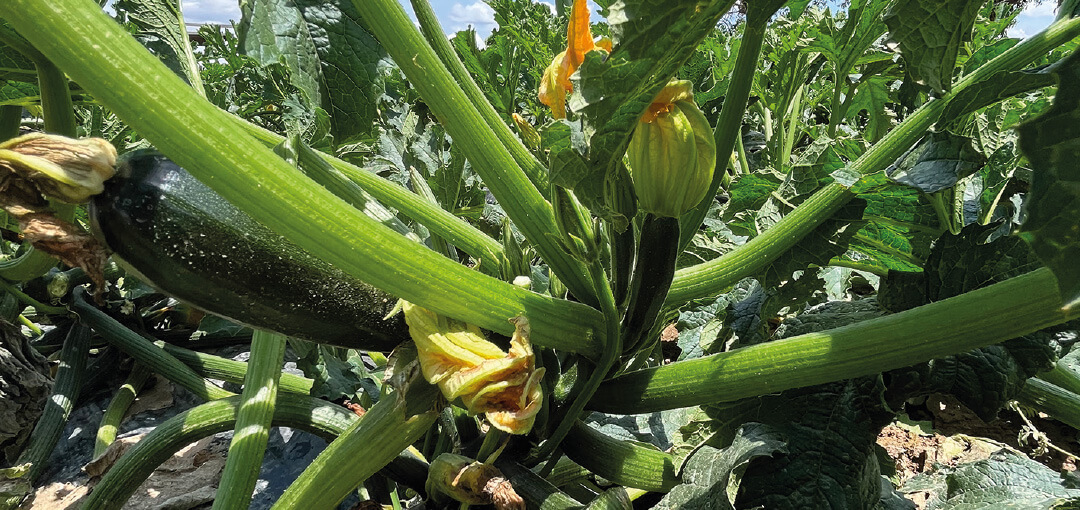
Latest
News
Getting the soil balance right
Case study: Zucchinis, Shepparton Victoria
Dhami Singh, originally from the Punjab region of India, has always been passionate about farming. After immigrating to Australia, he now leads a team of 14 people in Shepparton Victoria, growing 200 acres of zucchini under contract. With a master’s in mathematics, Dhami is not your typical zucchini farmer.
However, in December 2023, Dhami and his team faced a serious challenge when the fruit/flowers of their zucchini crop started to dry out and decompose from the top. Despite trying every remedy they could research and working with local agronomists, nothing seemed to work. In an exasperated conversation with a contact in the UK, they were recommended to contact Dr Parmjit Singh Randhawa, BioAg’s Extension Area Manager. Parmjit has extensive experience in Vegetable Agronomy in leading vegetable companies throughout Australia and New Zealand.

Top-down dying of the zucchini female flower and fruit was diagnosed as blossom-end-rot.
Healthy soils are soils that have both macro and micronutrients in balance. Therefore Parmjit’s first request was for any available soil test results to see what nutrients were out of balance within the soil. Unfortunately, the paddock in question had not undergone any soil testing. The only information available was photos of the paddock and zucchini plants, which indicated disease.
Using his scientific research skills and PhD in Soils knowledge, Parmjit used the law of elimination to diagnose the zucchini plant issue. He learned that Shepparton had experienced unusual and prevailing wet weather in December 2023. This resulted in plants being exposed to excessive amounts of naturally derived nitrogen, causing a nitrogen imbalance in the zucchini plants.
The nitrogen imbalance negatively impacted the availability of calcium for the zucchini plant and developing fruit. Calcium is critical for fruit development, especially for zucchini. The calcium deficiency led to blossom-end-rot in the developing zucchini. Applying too much nitrogen to zucchini plants (either naturally from rain and/or nitrogen fertilisers) can reduce calcium uptake and affect the developing fruit quality and yield.

Post calcium fertigation: healthy Zucchini fruit replace the disease affected fruit.
BioAg recommended fertigating the zucchini crop with soluble liquid calcium as soon as possible. The results were astounding, with healthy new zucchini fruit appearing after only 72 hours of fertigation with calcium.
To prevent further issues in future crops, Dhami and his team will implement a full BioAg program. The program includes regular soil testing and the application of natural fertilisers and ameliorates to address soil deficiencies and build soil structure to buffer any recurrence of surplus natural N. Dhami’s 2024 crop program is currently evaluating zucchini, okra, and sweet corn for the upcoming season.

GV Roo’s Pty Ltd Director Dhami Singh with BioAg Extension Area Manager Dr Parmjit Singh Randhawa.


Recent Comments